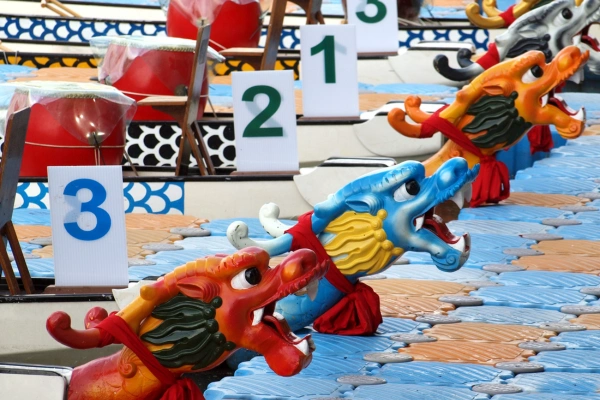Psst. Hey, you. Yeah, you. Do you know how many senses there are in the body? Five? Nope, actually – there are eight! And each of these eight senses can be engaged in sensory play for your little tot’s maximum enjoyment.
If you’re feeling a little lost about what sensory play actually is, how it works, what are some examples of it… Well, great news – ONE Intervention has (as always) got your back!
In today’s article, we’ll be going through:
- The sensory system
- What sensory play is
- The benefits of sensory play for babies and children
- Ideas for DIY sensory toys.
Sounds exciting? Fantastic! Without further delay, let’s get right into it: This Is Sensory Play Actually Simplified.

The Sensory System
We all know about the five senses – sight, hearing, touch, taste and smell. So, each of these senses are processed by a sensory system:
- Visual (sight)
- Auditory (hearing)
- Tactile (touch)
- Gustatory (taste)
- Olfactory (smell)
However, in recent years, scientists have discovered three more systems:
- Vestibular (Body movement)
- Proprioception (Body awareness)
- Interoception (Self awareness)
Let’s briefly go through each of these three systems, so that we can understand how sensory play engages all eight senses.
Vestibular System

The vestibular system helps us to determine our sense of speed and coordination of movement. It’s important because it helps the body to maintain its balance. Moreover, the vestibular system works with the visual and auditory system to coordinate balance, attention and eye control.
For example, the movement of straightening your spine when you correct your posture. That’s your vestibular system working to sense and coordinate said movement.
Proprioception System

The proprioception system processes your body in relation to the space around you. Basically, this system interprets the movement in your muscle and joints to determine how much pressure you’re putting on something.
An example of engaging with your proprioception system is when you shake someone’s hand. You need to know that you’re not applying too much pressure, which may hurt the other person.
Interoception System

The interoception system provides information about your body itself. It has receptors to signal to you your emotional state, as well as your internal physical state.
For instance, the awareness of temperature or the urge to urinate is all thanks to the interoception system. Also, emotions such as joy or anger are registered by this interoception system as well. It’s like your body’s thermometer for your emotional and internal physical state.
Of course, the information provided about the sensory systems here are really quite brief. It’s only meant to serve as a foundation for how sensory play engages all eight sensory systems. So, if you’d like a deeper dive into the sensory systems, check out this article by Neurodivergent Insights!
What Is Sensory Play?
Okay, cool, you’re saying – but what has any of this got to do with sensory play?
Well, sensory play engages all eight sensory systems. This is because sensory play is defined as any activity that stimulates our senses, according to this article by Action For Children.
Sensory play focuses on developing your child’s senses so they can learn more about the world around them. We all know that our senses aren’t fully developed at birth. Instead, we need time to engage our senses and mature as we discover the sensory world.
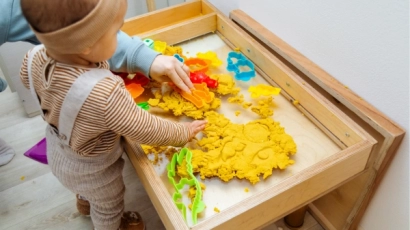
It’s only natural that we do this through sensory play.
In fact, you’ve probably introduced your kid to sensory play at one point or the other in their lives.
Riding a bike? That engages their vestibular and proprioception senses. So, it’s a form of sensory play. Kneading slime? That develops their sense of touch (and even smell, if the slime is scented!) Something as simple as listening to a nursery rhyme can engage their auditory system. Therefore, all of this counts as sensory play – isn’t that amazing?
What Are The Benefits Of Sensory Play For Babies And Children?
In general, sensory play has vast benefits for both babies and children. It’s a vital part of child development and helps build nerve connections in their brains. This is important because these nerve connections are the foundation of higher-order thinking when your kid grows up.
Essentially, sensory play can improve every aspect of your child’s life. These are just a few benefits of sensory play for babies and children.
Sensory Play Improves Language Skill
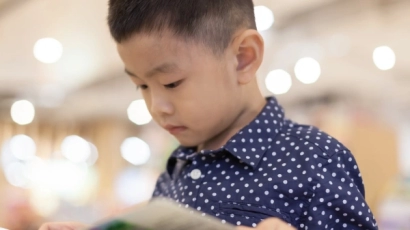
Your child’s linguistic ability is able to develop naturally when they engage in sensory play. Don’t believe us? Well, look at it this way – how would you describe a garden?
You’d probably tell us about the warm sunlight on your skin, the sweet scent of flowers and the earthy crunch of dirt beneath your feet. All of these are information that you process through your senses. The temperature of the sun is determined by your interoception system. The smell of flowers engages the olfactory system. And the feel of dirt uses your tactile system.
See?
Sensory play teaches your child to describe what they’re doing and how it feels. This allows them to expand their vocabulary and understanding of the language. When you encourage them to express this verbally, your kid even gets the chance to practise their grammar in their description.
All this is to say, sensory play is the simplest and most effective way to dramatically improve your child’s language skill.
Sensory Play Improves Social Awareness
The great thing about sensory play is that it can be done alone, or with a group. When you encourage your little one to engage in group sensory play, you also offer them the opportunity for social interaction.
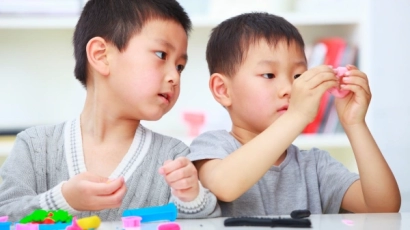
For example, they can play on the park swings with their friends. This engages their vestibular system, because they’re learning about movement through the rocking of the swings.
At the same time, your kid is also learning how to communicate with their friends. They’re learning how to take turns playing. This teaches them how to express their needs and wants in a respectful way – in other words, how to communicate clearly.
Sensory play encourages your little one to adapt to how others play alongside them. This improves their social skills and gives them the chance to spend time with their peers. Thus, sensory play is an incredibly effective way to improve your child’s social awareness.
Sensory Play Improves Motor Skills
We shouldn’t forget that at the end of the day, sensory play is, well, it’s still a type of play. This means that it entails all the usual things that you’d expect when playing with kids: Running, jumping, and even crawling.
These actions engage the large muscle groups in your child’s body. Therefore, they can practise their gross motor skills through sensory play. This can help improve their athletic performance and ensures that your child is happy and healthy.

Other types of sensory play can engage your kid’s fine motor skills as well. For example, playing with blocks engages the sense of touch. Your child has to feel the texture of the wooden block when they pick it up and play with it. At the same time, they have to use their fine motor skills to balance one block on top of another.
Hence, sensory play is a great opportunity all around to improve your child’s motor skills.
And for even more benefits of sensory play, check out this article by Cleveland Clinic!
What Are Some Ideas For DIY Sensory Toys?
So, you’re excited about sensory play. We now understand how it works and why it’s so important. And the only thing left to do is to come up with some ideas for sensory toys.
Well, ONE Intervention has compiled a list of free, fun, absolutely fabulous sensory toys that you can make at home!
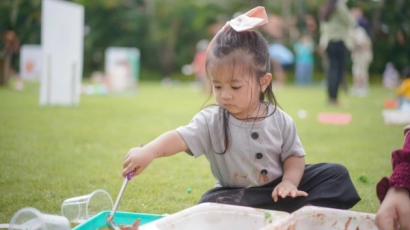
Sensory bin or bottles
This is arguably the most simple form of sensory play. It’s also the most effective. The main idea is that you have a bin, or bottle, and you put objects that engage different senses inside.
For example, you can add beans to a bottle for a fun shaker that will amuse your toddler for hours. It doesn’t take much effort, yet it engages the auditory system through the shaking noise of the beans. And, it even engages the proprioception system, since your tot will have to learn how much force needs to be used to shake the bottle.
This is, of course, one of the most basic forms of a sensory bottle. If you’re looking for something more flashy, you could try burying your baby’s favourite toys in a bin of edible oats. This encourages them to engage their sense of sight, touch and even taste while finding the toys!
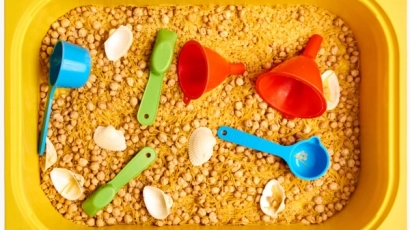
You could even try freezing different objects and putting them in the bin to introduce your little one to the concept of temperature. Or, you could have a sensory bin entirely dedicated to nature, with twigs, leaves and dry flowers dropped inside.
The possibilities are endless and the rewards of sensory play are great. Plus, it’s just fun!
Edible Water beads
If your little one is feeling a bit adventurous (and you don’t mind the mess), you could make some edible water beads for them to play with.
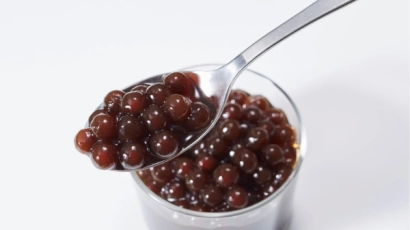
These colourful little guys are actually boiled tapioca pearls, with food colouring. The brightly coloured dye engages their sense of sight, and is a great opportunity to teach your child about colours.
Moreover, the soft, squishy texture of tapioca pearls is really fun for your kid to explore! They’re likely to be fascinated by the way they can pinch and shape each individual pearl. Or, if they’re feeling mischievous, they’d squeeze a handful of pearls at once. All of this is processed by their proprioception system, so they learn more about pressure.
The entire process takes less than half an hour to prepare. Yet, your kid is sure to engage in this delightful sensory play for hours at a time.
DIY Paint
It’s actually really easy to engage in sensory play through paint. Literally, all you need to do is put a couple of drops of food colouring into some plain yoghurt. And there you have it – taste safe, DIY paint!
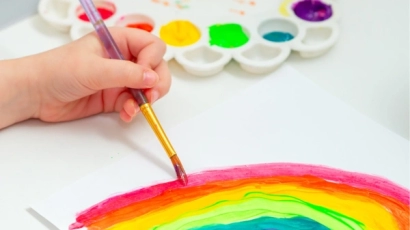
Your little ones will absolutely love the tactile sensory input that comes from this ‘paint’. Encourage them to smear it over paper and create their own lovely artworks to be proudly displayed!
The paint engages their sense of sight, taste, and even smell. Why not take this opportunity to teach your child about the different types of smells – is the yoghurt sour? Sweet? Let them describe their sensory experience to you.
For even more ideas check out this helpful blog post by Inspire My Play. They’ve got tons of creative sensory toys and sensory play for babies and children! Or, check out our article on DIY slime for loads of sensory fun!
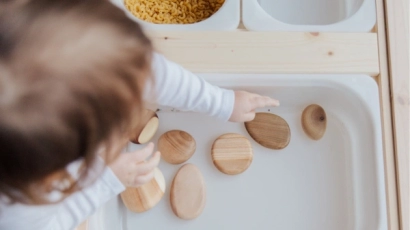
Essentially, sensory play engages a child’s eight senses through everyday play. This serves as the foundation for life skills such as socialising, communication and movement. And, sensory play doesn’t need to be expensive or difficult.
Eager to start on it with your little ones? Great! Let us know how your sensory play experience went in the comments below 💬👇

